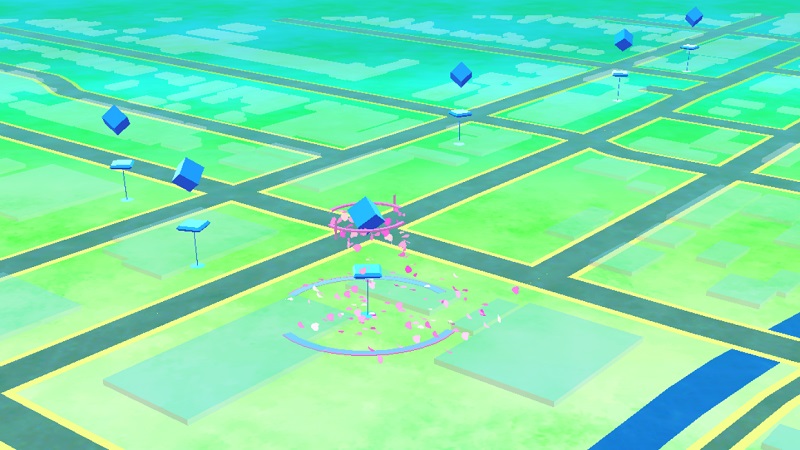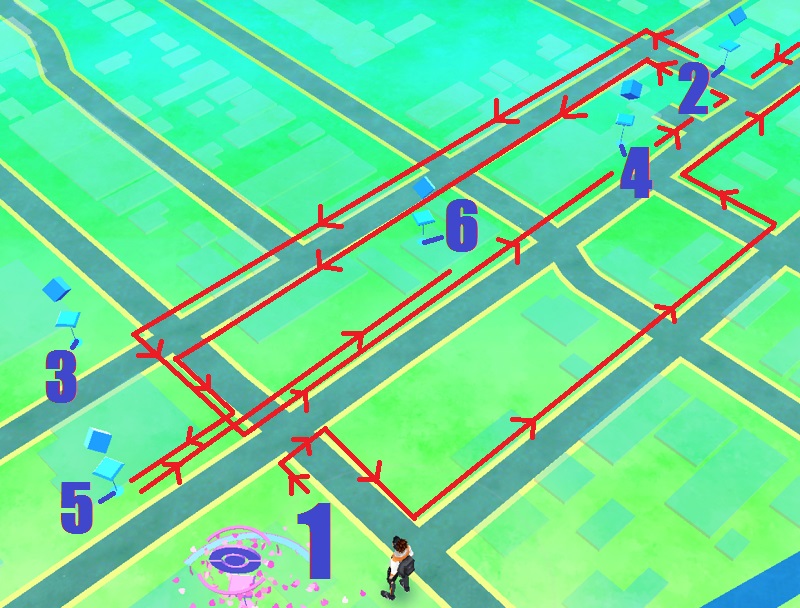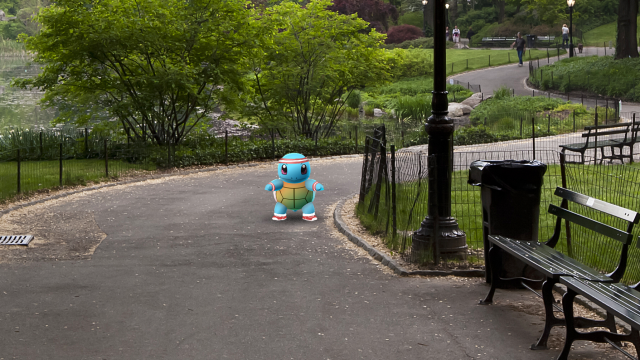If you want to be the very best, like no one ever was, you need to get in shape. Pokémon GO is already getting people to move more, but you may want to crank things up a notch. This workout will get you fit while you play, and can be easily tailored to your area.
Squirtle’s working on his four-pack. Image by Jim Cooke.
Interval training, for those who aren’t familiar with the concept, is a workout where you push yourself as hard as you can in short bursts, rest, then repeat. For example, you sprint for a short time, then stop to catch your breath, and sprint again. This kind of stop and go activity is perfectly suited for the walk-and-stop play of Pokémon GO, and knowing that you get to play while you exercise can be a huge motivator. You’ll collect items at PokéStops (like eggs that only hatch if you walk or run), hatch said eggs with the massive number of steps you rack up, wear down rival gyms so you can take over, find wild Pokémon to catch and get fit all at the same time.
Find a Good Training Area

My nearest PokéStop area.
You might have a preferred walking or running route near you, but you might need to switch things up a bit so you can include nearby Pokémon GO hotspots. If you open the app, you can rotate your view on the main screen to see what’s nearby. PokéStops are the blue floating squares you see in the distance and they’re going to be the main ingredient in your interval training route.
They’re usually clumped together, and each stop represents a mix of businesses, monuments, landmarks and other points of interest. If you don’t live somewhere with a lot of them around, that’s OK. You can tailor these workouts to fit an area with as little as one PokéStop, but the more in the area the better. Gyms — the Pokémon kind — are good to include in your route as well, but if you’re not interested in battling, or you’re not high enough level yet, focus on the PokéStops for now and work gym battling in later.
Choose Your Workout Plan
The basic format of a Pokémon GO interval training session looks like this:
- Warmup for 15 minutes. You can jog to your PokéStop-dense location for your warmup like I do, or start your warmup when you arrive if you had to travel to get there.
- Spin for items at a PokéStop to kick things off.
- Do your first interval of intense sprinting to the next PokéStop. If the next PokéStop is too close, go to the closest one that matches your planned intervals (more on that below). But don’t look at your phone and get distracted. In fact, enable power save mode in the Settings menu and run with your phone upside down in your hand to save battery, and keep yourself from getting distracted by Pidgeys.
- Rest and spin for items at the PokéStop.
- Do next interval.
- Repeat until complete, followed by a quick 10-minute cooldown.
My cooldown is a nice relaxing walk home that’s dedicated to catching Pokémon, since you shouldn’t be stopping to catch Pokémon while you’re sprinting (the whole point is to keep your heart rate up). Now that you know the basic setup, you can build your own interval workout with the same principles, or use one of these pre-made workouts I put together.
The PokéStop Trot
This is the easiest workout to set up, and it can be one of the most effective if you do it right. But I only recommend this workout for those who have at least three PokéStops nearby. Here’s what you do:
- Warmup for 15 minutes.
- Spin at first PokéStop.
- Sprint toward the second PokéStop for three minutes at 90-95 per cent effort to maximise your heart rate.
- Spin at second PokéStop.
- Jog to third PokéStop at 50 per cent effort.
- Spin at third PokéStop. Rest until this PokéStop refreshes (about five minutes).
- Spin at this PokéStop again and repeat the whole process two more times.
This is the one I like to do the most because it offers plenty of rest time and gives you an opportunity to take care of any housekeeping you need to do in your game, like trading in common Pokémon for candies.
The PokéPyramid
This workout is a little more complicated in terms of timing, but it eases you into the intense stuff. Also, it’s a great option if you don’t have groups of PokéStops near you because you technically only need one for this to work. It’s a basic cardio-sprint pyramid with a fresh coat of Pokémon paint. Here’s what you do:
- Warmup for 15 minutes by jogging.
- Spin at first PokéStop.
- Sprint at 90-95 per cent effort for 30 seconds, then recover by jogging at 50 per cent for 30 seconds.
- Sprint for one minute, then recover for one minute.
- Sprint for two minutes, then recover for two minutes.
- Spin at the next PokéStop, or return to spin at the original one.
- Sprint for four minutes, then recover for four minutes.
- Spin at the next PokéStop, or return to spin at the original one.
- Sprint for two minutes, then recover for two minutes.
- Sprint for one minute, then recover for one minute.
- Sprint for 30 seconds, then recover for 30 seconds.
- Spin at the last PokéStop, and you’re done!
Again, be sure to finish off with a cooldown of walking around and looking for wild Pokémon.
Wild Fartlek Caught!
This interval workout style is for the improvisers out there, or those who have very little in terms of PokéStops and gyms around them. The idea is that all of your sprint intervals and recovery periods are determined by the built-in randomness of Pokémon GO.
For example, you start with a jog to warm up, then as soon as you hit a PokéStop, gym, or feel the buzz of a wild Pokémon nearby, you stop and take care of business, then take off in a sprint afterward. You keep sprinting until you run into the next PokéStop, gym, or wild Pokémon, and stop again to handle your business. You just keep repeating this until you’re worn out. It’s a lot like doing fartleks when you run, and brings new meaning to the funny-sounding word that means “speed play” in Swedish. Also, fartlek kind of sounds like a Pokémon, so you might as well catch it.
Map Out Your Route and Track Your Progress

My interval workout route. You’ll need to get creative with your route making.
Once you have a good area picked out, and you know what type of interval workout you want to do, it’s time to map your route. You can do this in your head easily enough, or just use Google Maps, but it’s better to use apps like MapMyRun and Strava to nail things down. They will help you time your workout, tell you how far you’ve gone and give you information on elevation and safety while you layout your plans. They will also keep track of everything you do so you can see your improvement over time.
Mix In Strength Exercises

If you want to ramp up the challenge, you can easily add strength exercises to your cardio interval training. When you’re ready to increase the difficulty, follow these rules whenever you spin at a PokéStop:
- If you only get regular Pokéballs, do five squats.
- If you get a mix of different Pokéballs (regular, Great, Ultra), do 10 lunges.
- If you get only special Pokéballs (Great, Ultra), do five jump squats.
- If you get a Potion or Revive, do 20 push-ups.
- If you get a Super Potion, do 10 burpies.
- If you get a Razz Berry or other special item, do a 30-second plank.
You can lower or increase the reps as you see fit. Don’t overdo it if something feels difficult, and take precautions if you’re going to workout in the hot sun. If you add these workouts to a few of your Pokémon chasing adventures every week, you’ll see that your Pokémon aren’t the only things capable of evolving.

Comments